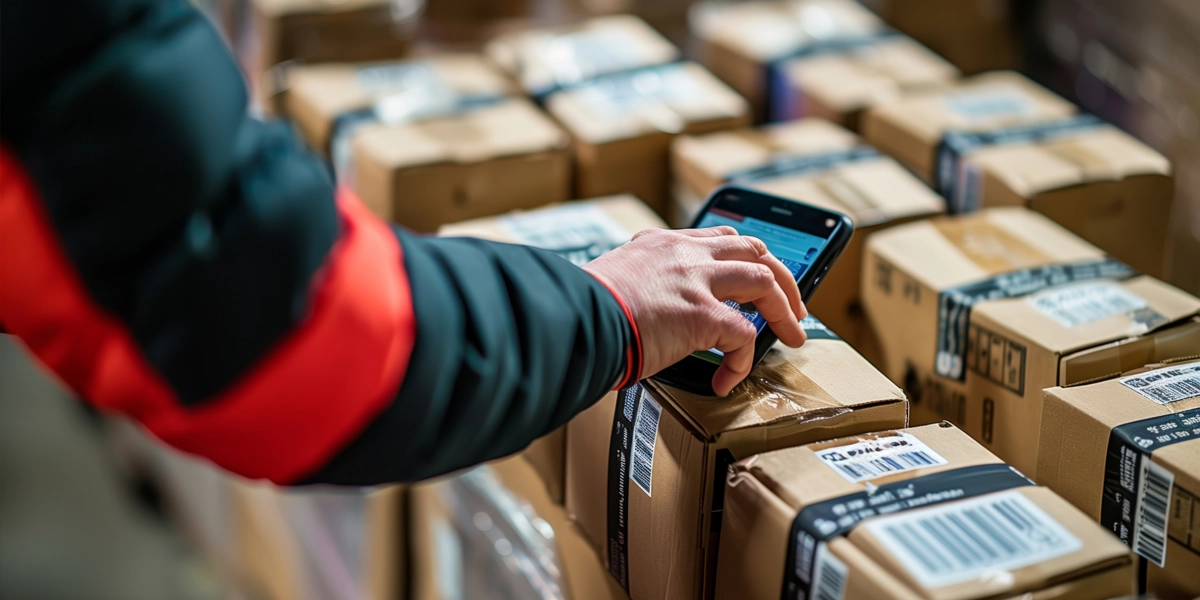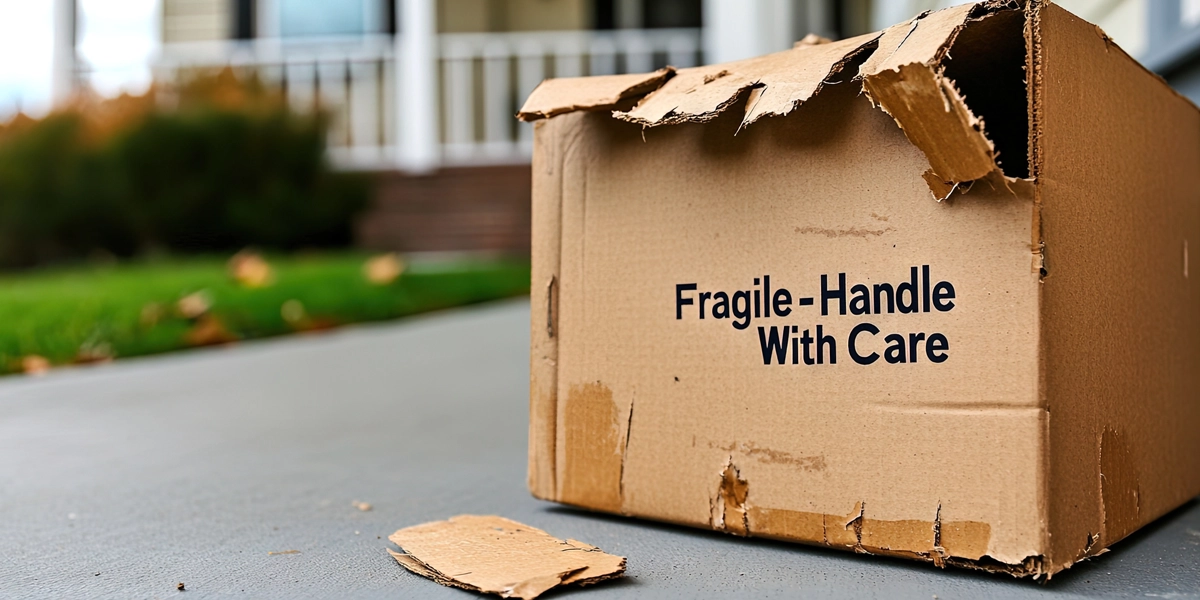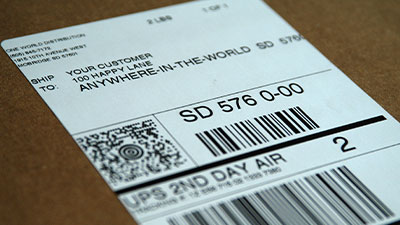In This Article:
A conversation with Heather Bohr and Amber Fullerton from One World Direct (OWD)
Interview by Jack Scullin | August 8, 2025
If you’re an ecommerce brand trying to make sense of your shipping costs, you’re not alone. Hidden fees. Surprise surcharges. Complex carrier invoices. When ecommerce brands attempt to assess total fulfillment expenses with potential 3PLs, they are often misled, frequently paying significantly more for shipping than they expected.
In this candid interview, Heather Bohr, Co-Founder of One World Direct (OWD), and Amber Fullerton, Chief Customer Officer, pull back the curtain on how traditional 3PL pricing works and how OWD’s flat rate shipping model solves the chaos.

Heather Bohr, Co-Founder & President

Amber Fullerton, Chief Customer Officer
Heather:
About five years ago, we had grown large enough that I thought it made sense to standardize on one carrier to secure the best rates. We were using multiple carriers, and I wanted to find ways to improve efficiency.
I conducted a comprehensive analysis, not just of the base rates, but also of fuel surcharges, residential fees, and all other add-ons. And to my surprise, I found that every carrier has its niche. Sometimes we’d use three different carriers for the same weight category, depending on the destination zone.
That’s when we started looking for software that could make decisions based on total cost, not just rates. We found a rating engine that factors in zip code, dimensional weight, fuel, residential fees, and other variables, and selects the best carrier for each shipment.
But even with that software, we realized that most brands were getting crushed by surprise fees, especially those tied to dimensional weight.
Heather:
Dimensional weight is a major factor. Say you’re shipping a pillow that weighs 5 lbs, but it’s in a big box. The carrier might charge you as if it weighs 30 lbs.
Each carrier calculates DIM weight differently. Overnight services have lower DIM weights because space on a plane is more valuable. UPS might give us a better DIM factor than FedEx. Postal is standard.
Our rating engine factors all of this in. Most ecommerce brands don’t, and that’s where they lose money.
Heather:
A client might look at a FedEx rate sheet and say, “Great, my rate is $8.95.” But what they’re not seeing is the $6.20 residential fee, the 18% fuel surcharge, and other accessorial fees. That 18% can also be applied on top of those other fees.
One of the sneakiest tactics carriers have employed is expanding the number of ZIP codes that incur Delivery Area Surcharges (DAS), which can be as high as $15 per shipment. And now? 40% of all U.S. ZIP codes incur DAS.
At OWD, we ship over 2 million packages a year. So we amortize those surcharges across all packages. That makes our flat rate shipping model possible and the most affordable option.
Amber:
Let’s say you’re trying to decide what to charge your customers for shipping. Should it be break-even? A profit center? You’d need a serious investment in shipping software just to figure that out.
Even then, you might get hit with a fee two weeks after the package ships, like an address correction fee for a missing apartment number. That’s $23.50. It wipes out your margin for the entire order.
Heather:
And those fees just show up on your bill later. Most ecommerce brands don’t go through their shipping invoices line by line. They’re focused on marketing and growth, not deciphering statements.
Amber:
In fact, there are entire businesses that exist solely to analyze carrier statements. That should tell you everything about how needlessly complicated this system has become.
Jack:
So, how does OWD’s flat rate model help ecommerce brands avoid these traps?
Heather:
It’s simple and predictable. It’s weight-based. Brands know exactly what they’ll pay and can confidently charge customers, even if they’re offering free shipping.
Jack:
How do you handle peak season surcharges and fuel volatility?
Heather:
We guarantee rates for a full quarter. In Q4 of last year, there were 11 different surcharge start dates across FedEx and UPS. We simplified all that into one consistent rate from Oct 1 to Dec 31. No surprises.
Jack:
What’s included in your flat rate?
Heather:
Everything:
- Base fee
- Residential surcharge
- Fuel surcharge (which changes weekly)
- DAS, EDAS, and other accessorials
- Address correction fees
Amber:
We should publish a full list of the accessorial charges we include. It’s longer than most brands realize.
Heather:
Most ecommerce companies stick with one carrier because it’s easier. They’re told they’re getting a 57% discount, but that’s just the base rate.
We had a client whose FedEx rep told them their rates were better than ours. But the rep didn’t realize we include fuel, DAS, and residential fees. After a real comparison, the client saved $2 per package using OWD.
Most brands don’t have the volume to negotiate rates across multiple carriers. That’s where we come in.
Heather:
Flat rate reduces friction. It sets expectations for the brand and the customer. When we billed clients based on actuals, they’d think they broke even on shipping. Then, three weeks later, they’d get hit with a surprise fee. Suddenly, their profit is gone.
Our model eliminates that.
Heather:
Ask these questions:
- What accessorials do you include?
- How do you handle DAS, fuel, and residential fees?
- What happens when fuel prices spike?
- Is your quoted rate the total cost, or just the base rate?
Amber:
It’s about honesty. Because if you don’t ask, you’ll find out the hard way – on your invoice.
Heather:
Two of our core values are clarity and integrity. We guarantee our rates, even when external costs go up. When the Ukraine war caused fuel surcharges to jump 10% in one quarter, we honored our rates. That’s who we are.
Flat Rate Shipping: A Deeper Dive Into Improved Profits and Better Service
Ecommerce logistics costs have become a mystery, filled with hidden fees, changing charges, and confusing invoices. For brands seeking to grow profitably, the true cost of 3PL shipping can seem unpredictable. Carrier bills are hard to understand, packed with mysterious extra charges that seem to come out of nowhere. This isn’t an accident; it’s a system designed to keep operators confused and profits shrinking.
Many traditional 3PLs benefit from this confusion. Their pricing structures include pick & pack fees here, fuel surcharges there, and little surprises everywhere, each one eating away at your profit margin without notice. Hidden fees in fulfillment aren’t just annoying; they’re a silent tax on your business growth.
We will explain 3PL pricing in simple terms, highlighting the common strategies that drive up ecommerce logistics costs. Additionally, we delve deeper into the flat-rate shipping model and how it revolutionizes the industry by providing brands with clear pricing, predictability, and genuine control, empowering them to expand without fear of unexpected charges.
Understanding Traditional 3PL Pricing Models
Understanding the various pricing models employed by 3PLs is essential for any e-commerce brand. These models can be complex and unpredictable, making it challenging to manage costs and accurately forecast expenses.
Common 3PL Pricing Models
Ecommerce operators typically encounter several types of pricing models:
- Flat-Rate Pricing: Charges a single fixed fee based on weight or package type. Simple and predictable.
- Per-Unit Pricing: Costs are calculated per item or unit handled. While straightforward, this model can become expensive with high-volume orders.
- Activity-Based Pricing: Fees are based on specific activities such as picking, packing, and shipping. This model can lead to cost variability depending on order complexity.
- Pay-As-You-Go Pricing: No upfront fees; costs are incurred as services are used. Attractive for startups but risky due to fluctuating costs.
- Hybrid Models: Combine elements of the above models, aiming to balance predictability and flexibility. Complexity remains a challenge.
Challenges with Fluctuating Costs
The primary issue ecommerce brands face under traditional 3PL pricing models is the unpredictability of costs. Variable fees such as storage, pick & pack, and receiving add layers of complexity:
- Storage Fees: Often calculated based on volume or duration, these fees can escalate quickly during peak seasons or if inventory turnover is slow.
- Pick & Pack Fees: Charges for selecting items from inventory and preparing them for shipment. Rates vary depending on order size and complexity.
- Receiving Fees: Costs incurred for accepting and processing inbound shipments. These fees can fluctuate based on shipment frequency and volume.
A typical scenario might involve an ecommerce brand budgeting for monthly fulfillment costs only to find those costs have surged due to unforeseen storage needs or higher pick & pack activity during promotional periods.
Transparency in pricing is crucial. Ecommerce brands must scrutinize their logistics partners’ billing practices to avoid hidden fees that erode profit margins. Understanding these common pricing models is the first step towards gaining control over fulfillment expenses and ensuring profitability.
The Hidden Fees That Can Erode Your Profit Margins
Every ecommerce operator knows the sickening feeling of opening a carrier invoice and seeing the bottom line balloon with mysterious add-ons. These aren’t just rounding errors—they’re profit-killers, lurking in dense billing statements under innocuous names like “accessorial fees” and “fuel surcharge shipping.”
The Usual Suspects: Sneaky Accessorial Fees
Here’s what’s hiding in plain sight on most 3PL and carrier bills:
- Address Correction Fee: That one transposed digit? It could cost you $18–$25 per package, sometimes more. Carriers don’t just notify you—they charge, and they do it retroactively.
- Residential Delivery Surcharge (RDS): Shipping to a home address instead of a business? Tack on another $4–$7 per shipment—often without warning. Many brands only learn about RDS when reconciling their bloated monthly statements.
- Delivery Area Surcharge (DAS/EDAS): Sending orders to “out-of-the-way” ZIP codes triggers this fee—up to $6–$8 extra per package. These surcharges are notoriously hard to predict and can apply even in major suburbs, not just rural areas.
- Peak Season Charges: During holiday rushes or capacity crunches, many carriers introduce temporary surcharges. Brands see costs spike seemingly overnight, with little recourse or ability to plan ahead.
Fuel Surcharge Roulette
Fuel surcharges are the master stroke of unpredictability. Rates change weekly, tied to fluctuating oil markets, not your shipping volume or loyalty. What looked like a profitable promotion last week can turn into a loss leader when fuel costs suddenly jump, eating away at margins before you even realize what happened.
 A DTC brand might find, “We thought we had our shipping costs locked down, until the bill arrived double what we expected,” or “the rep never mentioned delivery area surcharges or that fuel would spike mid-campaign. We lost thousands on ‘free shipping’ offers that month.”
A DTC brand might find, “We thought we had our shipping costs locked down, until the bill arrived double what we expected,” or “the rep never mentioned delivery area surcharges or that fuel would spike mid-campaign. We lost thousands on ‘free shipping’ offers that month.”
This story isn’t rare. It echoes across hundreds of ecommerce boardrooms each quarter as surprise fees surface long after orders ship. Shrouded in jargon and fine print, these charges systematically undermine profitability, making cost control feel impossible for brands relying on conventional fulfillment partners.
Understanding where these hidden fees lurk is the first step toward reclaiming control and protecting every dollar of your margin from erosion by opaque logistics billing practices.
The Advantages of Flat-Rate Shipping for Ecommerce Brands
Flat-rate shipping is changing the game for ecommerce brands by providing a pricing model that eliminates the uncertainty of traditional carrier fees. With this new approach, there is one fixed rate based on weight or package type, ensuring that costs are always predictable.
One Predictable Charge
Unlike carrier fees that can vary, flat-rate shipping combines all common additional charges into one predictable fee. This means:
- Fuel surcharges
- Residential delivery fees
- Address correction charges
All of these charges are included in the flat rate, so there won’t be any surprise fees after delivery. This allows ecommerce brands to confidently plan their shipping expenses without any surprises.
Benefits for Ecommerce Brands
Flat-rate shipping offers significant advantages for ecommerce brands, such as:
- Stable quarterly pricing: This allows for accurate forecasting and budgeting without any unexpected costs.
- Easier cost control: With a fixed rate, brands can easily calculate their shipping expenses as a percentage of sales, facilitating better cost management.
- Improved customer experience: Flat-rate shipping enables brands to offer consistent, affordable shipping options to their customers.
- Simplified logistics: By eliminating the need to negotiate complex carrier contracts or constantly compare rates, brands can streamline their shipping operations, saving time and resources.
For instance, an ecommerce brand preparing for a seasonal promotion can reliably estimate its shipping expenses and allocate resources accordingly. This stability helps protect profit margins from sudden increases in logistics costs.
Real-World Application
Imagine you’re an ecommerce retailer selling mid-weight goods across the U.S. You think you’re paying $8.95 per package because that’s what your FedEx rate sheet says. But after residential surcharges, fuel fees (which fluctuate weekly), and delivery area surcharges, your actual cost per shipment is closer to $15–$18. Add in the occasional $23.50 address correction fee that shows up weeks later, and you’re suddenly losing money on what you thought was a break-even sale.
Now, switch to One World Direct’s flat rate model. That same shipment? One predictable, all-in rate. No surprise charges. No separate carrier negotiations. And no guesswork.
The result:
- Clear margins on every order
- Accurate shipping charges are passed to customers
- Fewer operational headaches
- Better financial forecasting for your team
By eliminating variable carrier fees and rolling all costs into a simple, weight-based pricing structure, OWD turns shipping from a margin killer into a strategic advantage.
Evaluating a 3PL Provider: Key Questions for Ecommerce Brands to Ask
Shining a light on fulfillment pricing starts with asking the right questions. The dirty truth about 3PL pricing is that many providers hide costs behind jargon, fine print, and shifting carrier charges. Scrutinizing every line of your fulfillment cost breakdown is non-negotiable if you want transparency in fulfillment pricing.
When evaluating a 3PL provider, put these questions front and center:
- Are all accessorial fees included in your quoted rate? Probe specifically for fuel surcharges, residential delivery, DAS/EDAS, and address correction fees.
- How often do rates change—especially fuel surcharges? Weekly adjustments can send your shipping budget into chaos.
- What are your receiving fees? Are inbound shipments charged per pallet, per carton, by weight, or another method?
- How is storage billed? Look for clarity on monthly storage minimums, cubic footage charges, and whether there are seasonal peak rates.
- Can you break down pick & pack costs? Some 3PLs charge per item picked or packed; others bury this in bundled activity fees.
- How are returns processed and billed? Returns processing can be a silent profit killer if not spelled out in advance.
If you can’t get a straight answer about what’s included, walk away.
A reputable partner will provide a transparent breakdown of fulfillment costs upfront. Brands that demand this level of clarity sidestep the dirty truth about unpredictable carrier charges and hidden fees, a crucial step toward building a bulletproof supply chain.
Flat-Rate Shipping's Positive Impact on Marketing and Customer Experience Teams
Enabling Clear and Consistent Shipping Policies
Ecommerce brands can finally breathe easy knowing their shipping strategy won’t be derailed by unpredictable costs. With flat-rate shipping, marketing teams can create promotions and free shipping offers without fearing that sudden surcharges will erode profits. Consistent shipping policies build trust with customers, ensuring they get exactly what was promised at checkout.
Eliminating Post-Order Billing Surprises
Flat-rate shipping also transforms the customer experience in shipping. By eliminating post-order billing surprises, ecommerce brands reduce the risk of customer dissatisfaction due to unexpected charges. When customers know upfront what they’ll pay for shipping, it creates a positive buying experience and strengthens brand loyalty. Also, your ecommerce brand won’t have to eat those additional charges that destroy your profit margins.
In essence, flat-rate pricing empowers both marketing and customer service teams to operate with clarity and confidence. The result is a seamless ecommerce journey from promotion to delivery, enhancing the overall shopping experience.
Work With a 3PL that Uses a Flat Rate Shipping Model and Make Your Fulfillment Costs Work for You
Ecommerce operators thrive on clarity, predictability, and profitability. The truth is: opaque carrier charges and hidden 3PL fees are quietly draining your margins. When optimizing ecommerce logistics costs, the brands that win are those that treat supply chain management as a strategic lever, not just a cost center.
A good rule to go by: If you can’t explain your shipping invoice to your CFO in under two minutes, it’s probably costing you too much.
Smart brands don’t settle for guesswork. They demand transparency and stable order fulfillment costs that support aggressive growth targets without being blindsided by surcharges or complex pricing schemes.
One World Direct’s flat-rate shipping model rewrites the rules:
- All-in-one pricing includes every common accessorial fee
- No more surprise bills after delivery
- Quarterly price stability empowers accurate forecasting
Choosing the right fulfillment partner means insisting on simple, predictable logistics. The unfortunate truth about 3PL pricing is no secret to those who make margin protection a priority. It’s time to shift from reacting to surprise invoices to leveraging transparent fulfillment model.
Ready to Stop Guessing and Start Scaling?
Most ecommerce brands don’t realize how much they’re losing to hidden carrier fees until it’s too late. With One World Direct’s flat rate shipping model, you get cost certainty, operational simplicity, and the freedom to focus on growth.
Bring your current rate sheets, your questions, and your shipping headaches. We’ll show you how flat rate fulfillment—plus exclusive offerings like Personalized-to-Consumer (P2C) services and call center services—can unlock new profit opportunities and a smoother customer experience.
In This Article:
Subscribe to our Newsletter
Tincidunt urna mauris eu quam vulputate lobortis sit. Purus feugiat arcu nunc quisque massa ut.



























